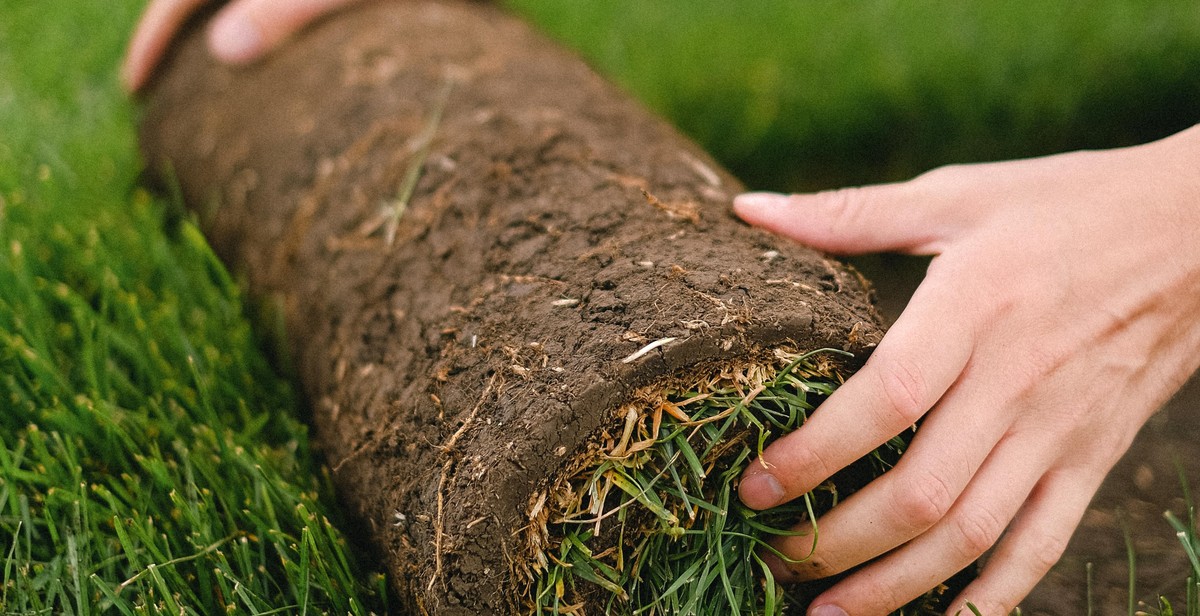How to Build a DIY Vertical Herb Garden with Hanging Baskets
If you love gardening but don’t have much space, a vertical herb garden with hanging baskets is a great solution. Not only is it space-saving, but it also adds a beautiful touch to your home decor. Building a DIY vertical herb garden with hanging baskets is easy and affordable, and you don’t need any special skills or tools.
What You’ll Need
To build a DIY vertical herb garden with hanging baskets, you’ll need:
- Hanging baskets
- Wooden boards
- Wood screws
- Wire
- Soil
- Herb plants or seeds
- Drill
- Screwdriver
- Pliers
Step-by-Step Guide
Follow these simple steps to build your own DIY vertical herb garden with hanging baskets:
- Measure and cut the wooden boards to the desired size for your vertical garden.
- Drill holes in the boards where you want to place the hanging baskets.
- Screw the wire to the boards to create a support system for the baskets.
- Attach the hanging baskets to the wire using pliers.
- Fill the baskets with soil and plant the herbs.
Tips for Success
Here are some tips to ensure your DIY vertical herb garden with hanging baskets is successful:
- Choose herbs that are suitable for hanging baskets, such as mint, parsley, thyme, and oregano.
- Make sure the hanging baskets have drainage holes to prevent waterlogging.
- Water the herbs regularly and fertilize them every few weeks.
- Hang the vertical garden in a sunny spot to ensure the herbs get enough light.

Benefits of a Vertical Herb Garden
A vertical herb garden is a great way to grow your favorite herbs in a small space. Here are some of the benefits of having a vertical herb garden:
Space-saving
Vertical herb gardens are perfect for small apartments, balconies, or patios where space is limited. By growing your herbs vertically, you can make the most of your available space and create a beautiful garden even in a small area. Hanging baskets are a great option for a vertical herb garden as they can be easily suspended from a wall or ceiling, taking up minimal space.
Easy to maintain
A vertical herb garden is easier to maintain than a traditional garden. With the herbs growing vertically, you can easily access them for pruning, watering, and harvesting. Plus, hanging baskets are easy to move around, making it simple to adjust the amount of light and water your herbs receive.
Aesthetically pleasing
A vertical herb garden with hanging baskets is not only practical but also beautiful. You can create a stunning display of herbs by choosing a variety of colors, textures, and scents. Plus, as the herbs grow and cascade down the baskets, they create a natural and organic look that adds charm and character to any space.
| Benefits | Description |
|---|---|
| Space-saving | Vertical herb gardens are perfect for small spaces |
| Easy to maintain | Vertical herb gardens are easier to maintain than traditional gardens |
| Aesthetically pleasing | Vertical herb gardens with hanging baskets are beautiful and add charm to any space |

Materials Needed for Building a DIY Vertical Herb Garden with Hanging Baskets
Building a DIY vertical herb garden with hanging baskets is a fun and easy project that can be completed in just a few hours. To get started, you will need the following materials:
Hanging Baskets
The first thing you will need for your DIY vertical herb garden is hanging baskets. These can be purchased at your local home and garden store, or you can order them online. Make sure to choose baskets that are large enough to accommodate your herb plants and that have drainage holes at the bottom.
Metal Chains or Hooks
To hang your baskets, you will need metal chains or hooks. These can be purchased at your local hardware store or online. Make sure to choose chains or hooks that are strong enough to support the weight of your baskets and plants.
Herb Plants
The next thing you will need is herb plants. You can choose any herbs you like, but some good options for a vertical herb garden include basil, parsley, thyme, and mint. Make sure to choose plants that are healthy and free from pests and diseases.
Potting Soil
You will also need potting soil to fill your hanging baskets. Choose a high-quality potting mix that is formulated for herbs and vegetables. Make sure to fill your baskets to the top with soil, leaving enough room for the plants to grow.
Fertilizer
Finally, you will need fertilizer to help your herb plants grow strong and healthy. Choose a fertilizer that is specifically formulated for herbs and vegetables, and follow the instructions on the package for application.
With these materials in hand, you are ready to start building your DIY vertical herb garden with hanging baskets. Follow the steps in our guide to create a beautiful and functional herb garden that will provide you with fresh herbs all season long.

Step-by-Step Guide: How to Build a DIY Vertical Herb Garden with Hanging Baskets
Herbs are a great addition to any kitchen, and what better way to have them on hand than to build your own vertical herb garden with hanging baskets? Follow these simple steps to create your own DIY herb garden:
Step 1: Choose a Location
First, choose a location for your vertical herb garden. You want to make sure it’s a spot that gets plenty of sunlight and is easily accessible for watering and harvesting. A sunny wall or fence is a great choice.
Step 2: Choose Hanging Baskets
Next, choose the hanging baskets you want to use for your herb garden. You can use any type of basket that has holes for drainage. Metal or wire baskets work well and add a rustic look to your garden.
Step 3: Prepare the Baskets
Before planting your herbs, you’ll need to prepare your baskets. Line them with a layer of sphagnum moss or coconut coir to help retain moisture. Then, fill them with a good quality potting soil mixed with compost or organic fertilizer.
Step 4: Hang the Baskets
Now it’s time to hang your baskets. Use strong hooks or brackets to secure them to your chosen location. Make sure they’re evenly spaced and level.
Step 5: Plant the Herbs
Choose the herbs you want to grow and plant them in your baskets. Make sure to leave enough space between each plant to allow room for growth. Some great herbs for a vertical garden include basil, thyme, mint, and rosemary.
Step 6: Water and Fertilize
Water your herbs regularly, making sure the soil stays moist but not waterlogged. Fertilize every few weeks with an organic fertilizer to keep your herbs healthy and thriving.
With these simple steps, you can build your own DIY vertical herb garden with hanging baskets and enjoy fresh herbs right in your own kitchen.

Maintenance Tips
Building a DIY vertical herb garden with hanging baskets is not the end of the process. To ensure that your garden thrives, you need to practice regular maintenance. Here are some tips for maintaining your vertical herb garden:
Regular Watering
Herbs require consistent moisture to grow and thrive. Therefore, it is essential to water your vertical garden regularly. You can use a watering can or a hose to water the plants. Ensure that the soil is moist, but not waterlogged. If the soil is too wet, it can lead to root rot, which can kill the plants.
Fertilizing
Fertilizing your vertical herb garden is crucial for the plants’ growth and development. You can use organic fertilizers such as compost or manure to provide the plants with the necessary nutrients. You can also use liquid fertilizers, which are easy to apply and quickly absorbed by the plants.
Pruning
Pruning is essential to keep your vertical herb garden healthy and prevent overcrowding. Prune the herbs regularly to promote bushy growth and prevent leggy growth. You can also remove any damaged or dead leaves or stems to prevent the spread of diseases.
Pest Control
Pests can be a significant problem for herb gardens. To prevent pest infestations, you need to practice good hygiene and keep the garden clean. You can also use natural pest control methods such as companion planting or organic pesticides to keep pests at bay.
| Maintenance Task | Frequency |
|---|---|
| Watering | 2-3 times a week |
| Fertilizing | Once a month |
| Pruning | As required |
| Pest Control | As required |
By following these maintenance tips, you can ensure that your DIY vertical herb garden with hanging baskets remains healthy and productive throughout the growing season.

Conclusion
Building a DIY vertical herb garden with hanging baskets is a great way to add some greenery to your home or outdoor space. With a little bit of planning and some basic tools, you can create a beautiful and functional herb garden that will provide you with fresh herbs all year round.
Benefits of a Vertical Herb Garden
Vertical herb gardens have several benefits over traditional gardens:
- They take up less space
- They can be positioned in areas with limited sunlight
- They are easier to maintain and harvest
- They can be a beautiful and decorative addition to your home or outdoor space
Final Thoughts
Building a DIY vertical herb garden with hanging baskets is a fun and rewarding project that can be completed in a weekend. By following the steps outlined in this article, you can create a beautiful and functional herb garden that will provide you with fresh herbs for cooking and other uses.
Remember to choose the right plants for your garden, provide them with the right amount of sunlight and water, and enjoy the benefits of having fresh herbs at your fingertips!
| Tags: | DIY, Herb Garden, Hanging Baskets, Vertical Garden |
